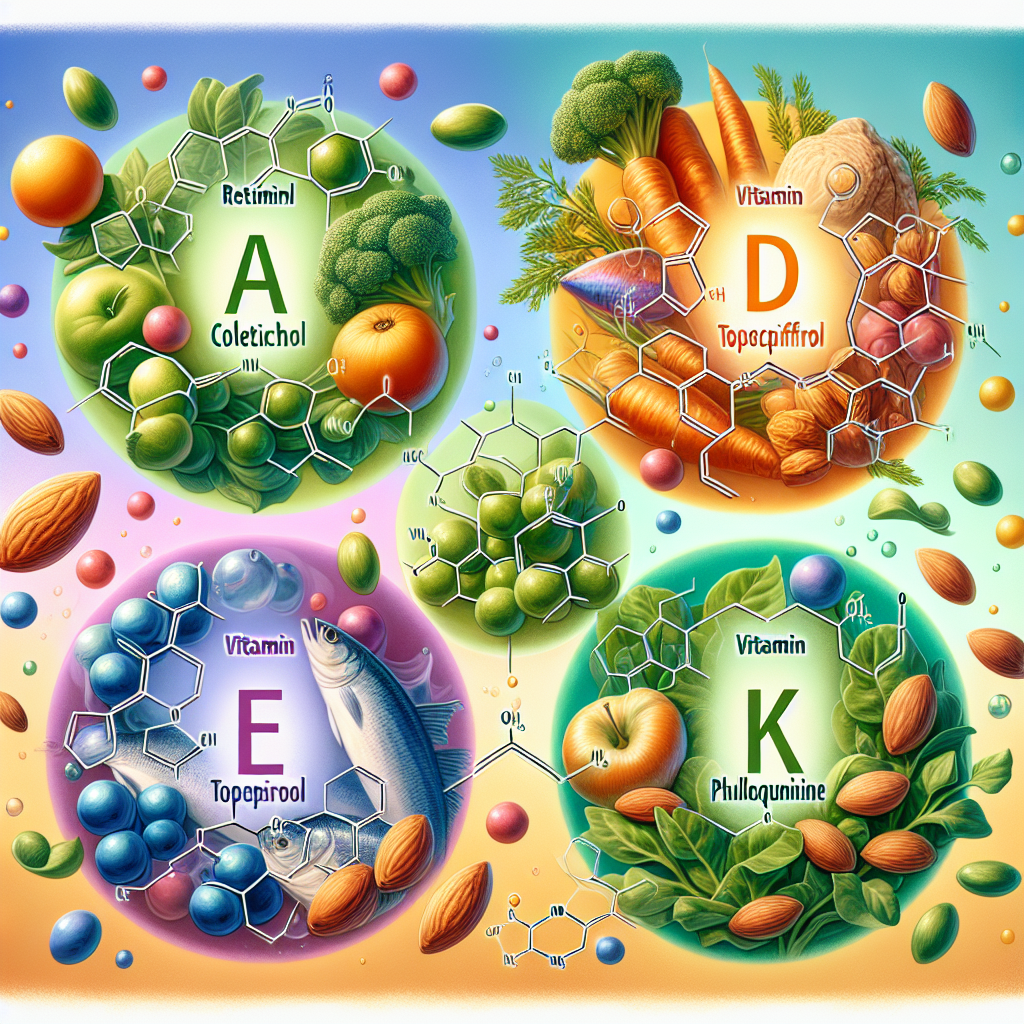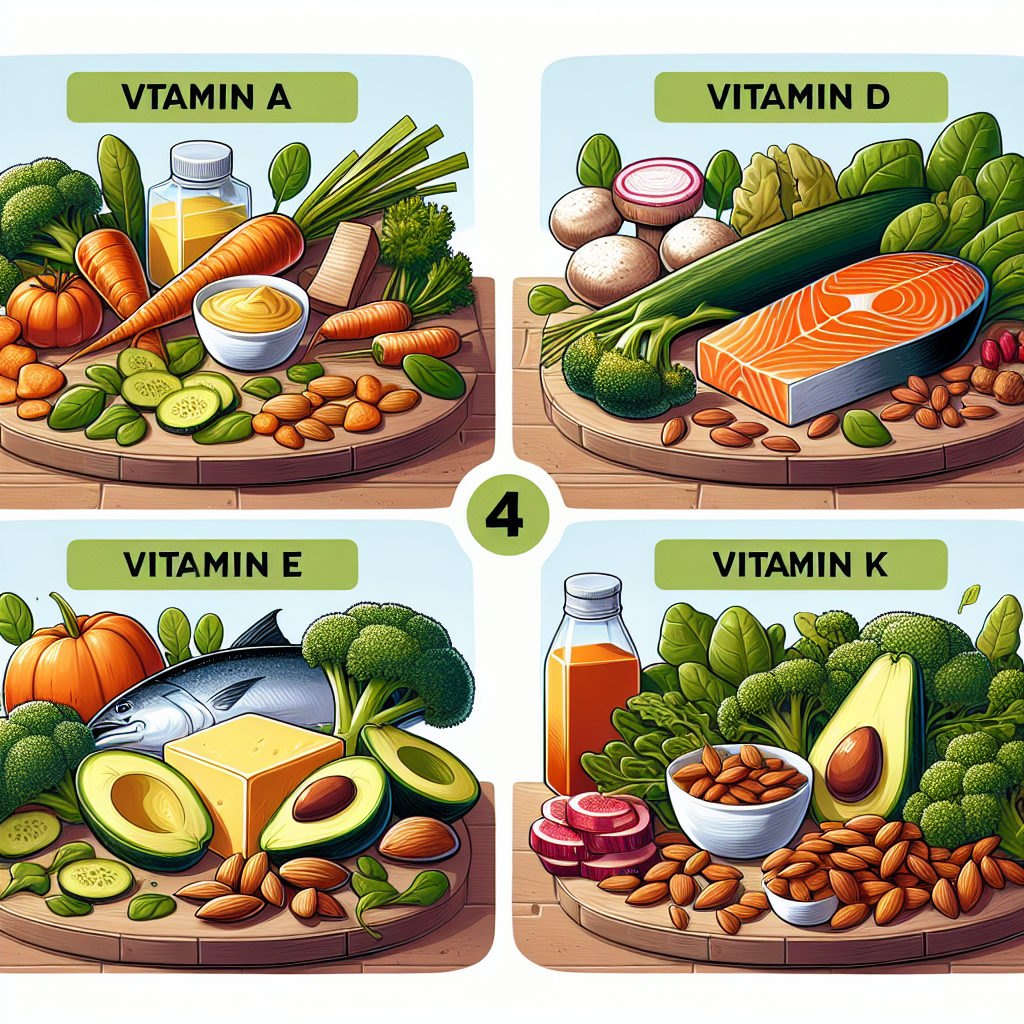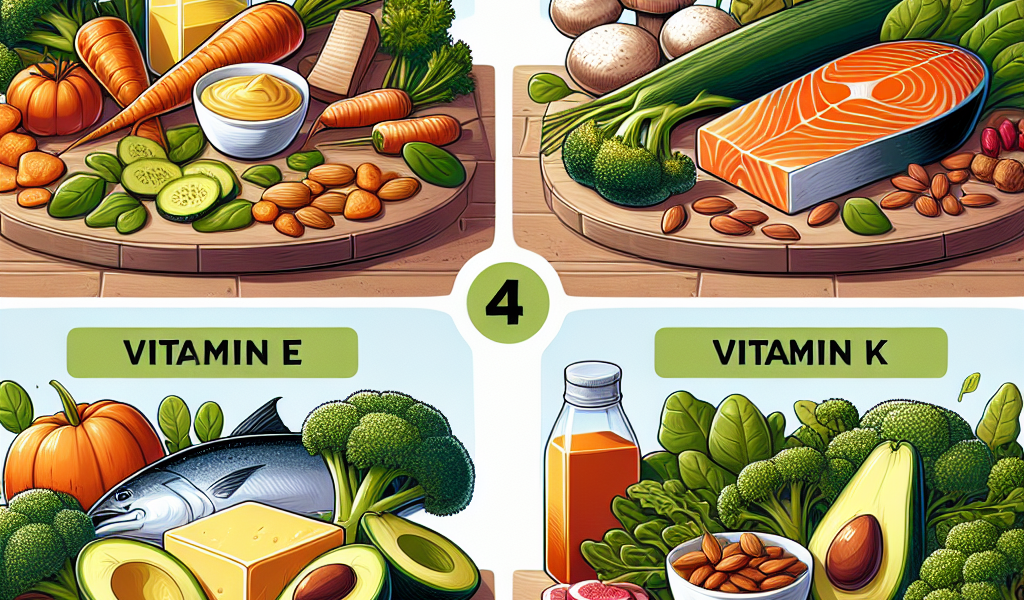Understanding Fat-Soluble Vitamins: Which is Not Included?
The article “Understanding Fat-soluble vitamins: Which is not Included?” meticulously explores the gamut of fat-soluble vitamins, with an additional twist – determining which vitamin does not fit into this category. The text educates on the role and significance of vitamins that are stored within the adipose tissues and the liver. These vitamins are crucial to our body’s optimal functioning and are inherent in a variety of foods all around us. The meticulous discussion winds down to a surprising revelation about one vitamin that is neither fat nor water-soluble, challenging traditional nutritional knowledge. Moreover, the article provides insight into each vitamin’s origins, functions, effects, and deficiencies, offering a comprehensive understanding of this vital yet often overlooked aspect of our diet.

Understanding Fat-Soluble Vitamins
Definition of fat-soluble vitamins
Fat-soluble vitamins are a group of vitamins that are soluble in fats and oils. Unlike water-soluble vitamins that are excreted by the body when in excess, fat-soluble vitamins are stored in the body’s fatty tissue and liver until they are needed.
How fat-soluble vitamins work
Fat-soluble vitamins are absorbed with fats in the diet through the small intestine and then transported throughout the body via the bloodstream. They play a critical role in numerous physiological processes, including immune function, bone health, and blood clotting, among others.
Examples of fat-soluble vitamins
The primary fat-soluble vitamins include Vitamin A, Vitamin D, Vitamin E, and Vitamin K. Each of these vitamins plays different roles in the body and is found in different types of foods.
Primary Fat-Soluble Vitamins
Vitamin A
Vitamin A is a fat-soluble vitamin crucial for good vision, a healthy immune system, and cell growth.
Vitamin D
Vitamin D aids in the absorption of calcium, which is essential for bone growth and regeneration.
Vitamin E
Vitamin E is a powerful antioxidant that protects cells from the harmful effects of free radicals.
Vitamin K
Vitamin K plays a significant role in blood clotting and bone health.
Vitamin A
Functions of Vitamin A
Vitamin A is crucial for the maintenance of the skin, teeth, skeletal and soft tissues, and mucus membranes. It is also important for vision, as it aids in producing the pigments in the retina.
Dietary sources of Vitamin A
Vitamin A can be found in foods such as carrots, sweet potatoes, spinach, and kale. It is also present in animal products like eggs, milk, and liver.
Effects of Vitamin A deficiency
Vitamin A deficiency can lead to night blindness and a decreased immune system function. In severe cases, it can result in blindness.
Recommended daily intake of Vitamin A
The recommended daily intake of Vitamin A varies by age and sex. Generally, men are advised to consume 900 micrograms a day, while women should aim for 700 micrograms.
Vitamin D
Functions of Vitamin D
Vitamin D is essential for the absorption of calcium and phosphorus from the diet. These minerals are necessary for the maintenance of healthy bones and teeth.
Dietary sources of Vitamin D
Vitamin D can be obtained from fatty fish like salmon and mackerel, fortified dairy products, beef liver, and egg yolks. It can also be synthesized in the skin in response to sunlight.
Effects of Vitamin D deficiency
A deficiency in Vitamin D can result in softening of the bones, a condition known as rickets in children and osteomalacia in adults.
Recommended daily intake of Vitamin D
For adults, the recommended daily intake of Vitamin D is between 15 to 20 micrograms, while infants and children should receive approximately 10 micrograms.

Vitamin E
Functions of Vitamin E
Vitamin E acts as a potent antioxidant that helps protect cells from the damaging effects of free radicals, which are harmful molecules that can lead to cancer and cardiovascular diseases.
Dietary sources of Vitamin E
Vitamin E is found in various foods, including nuts and seeds, spinach and broccoli, and vegetable oils like wheat germ, sunflower, and safflower oils.
Effects of Vitamin E deficiency
Vitamin E deficiency is rare but can cause nerve and muscle damage, resulting in loss of body movement control, muscle weakness, and vision problems.
Recommended daily intake of Vitamin E
The recommended daily intake of Vitamin E for adults is 15 milligrams.
Vitamin K
Functions of Vitamin K
Vitamin K is important for blood clotting, which prevents excessive bleeding. It also helps maintain bone health.
Dietary sources of Vitamin K
Vitamin K can be found in leafy green vegetables, broccoli, and Brussels sprouts. It can also be found in some fruits, such as blueberries and figs, as well as in eggs and meat.
Effects of Vitamin K deficiency
A deficiency in Vitamin K can cause easy bruising and excessive bleeding.
Recommended daily intake of Vitamin K
The recommended daily intake of Vitamin K is 90 micrograms for women and 120 micrograms for men.
Which is Not a Fat-Soluble Vitamin?
Characteristics of water-soluble vitamins
Water-soluble vitamins are those that cannot be stored in the body and therefore need to be replenished more frequently than fat-soluble vitamins. They include the B-vitamins and Vitamin C.
Exploring Vitamin C and the B Vitamins
Vitamin C is important for the growth and repair of tissues, while B-vitamins are key players in metabolism, brain function, and cellular processes.
The differences between fat-soluble and water-soluble vitamins
The main difference between these two groups of vitamins lies in how they are absorbed, transported, stored, and excreted by the body. Fat-soluble vitamins are absorbed along with fats and are stored in the body for later use, while water-soluble vitamins are absorbed directly by cells and any excess is excreted in urine.
Understanding Body Fat
Definition and function of body fat
Body fat, also known as adipose tissue, is a form of connective tissue composed of fat cells. It serves several functions, including storing energy, insulating the body, and protecting organs.
Types of body fat: essential and storage
There are two main types of body fat: essential fat, which is necessary for normal physiological function, and storage fat, which is accumulated when the body takes in more calories than it burns.
How to measure body fat
Body fat can be measured using various methods such as skinfold thickness measurements, bioelectrical impedance, and dual energy x-ray absorptiometry (DEXA).
Healthy body fat percentage range
A healthy body fat percentage ranges from 10-20% for men and 20-30% for women.
Role of Fat-Soluble Vitamins in Body Fat
How fat-soluble vitamins affect body fat
Fat-soluble vitamins are stored in body fat and can influence the body’s fat storage and metabolic processes.
Importance of fat-soluble vitamins in maintaining a healthy body fat range
Getting an adequate amount of fat-soluble vitamins is crucial in maintaining a healthy body fat range as they play a role in metabolism and overall health.
Effects of fat-soluble vitamin deficiency on body fat
a deficiency in fat-soluble vitamins may affect the body’s ability to regulate energy storage and could potentially lead to an increase in body fat levels.
Importance of Balanced Diet in Vitamin Intake
Incorporating fat-soluble vitamins in daily diet
To ensure adequate intake of fat-soluble vitamins, it is important to include a variety of foods in the diet. This should contain fruits, vegetables, lean proteins, whole grains, and healthy fats.
Effects of diet on vitamin absorption
The presence of dietary fat is necessary for the absorption of fat-soluble vitamins. Therefore, a diet that is extremely low in fat could result in poor vitamin absorption and potential deficiencies.
Recommended dietary choices for adequate vitamin intake
It is recommended to choose foods high in fat-soluble vitamins such as fatty fish, nuts and seeds, leafy green vegetables, and fruits. It is also crucial to incorporate sources of healthy fats, like avocados and olive oil, to aid in vitamin absorption.


Pingback: Vitamin Category: Which One is not Fat-Soluble? - Lose Weight With Absolute Minimal Diet - Your All In One Guide to Weight Loss & Nutrition